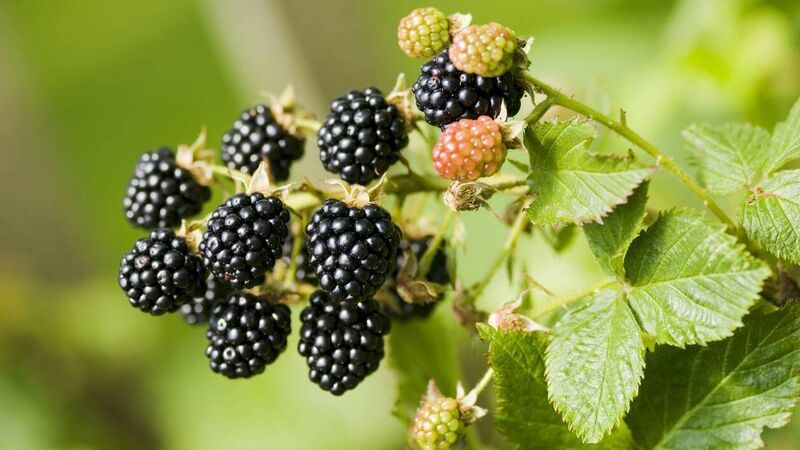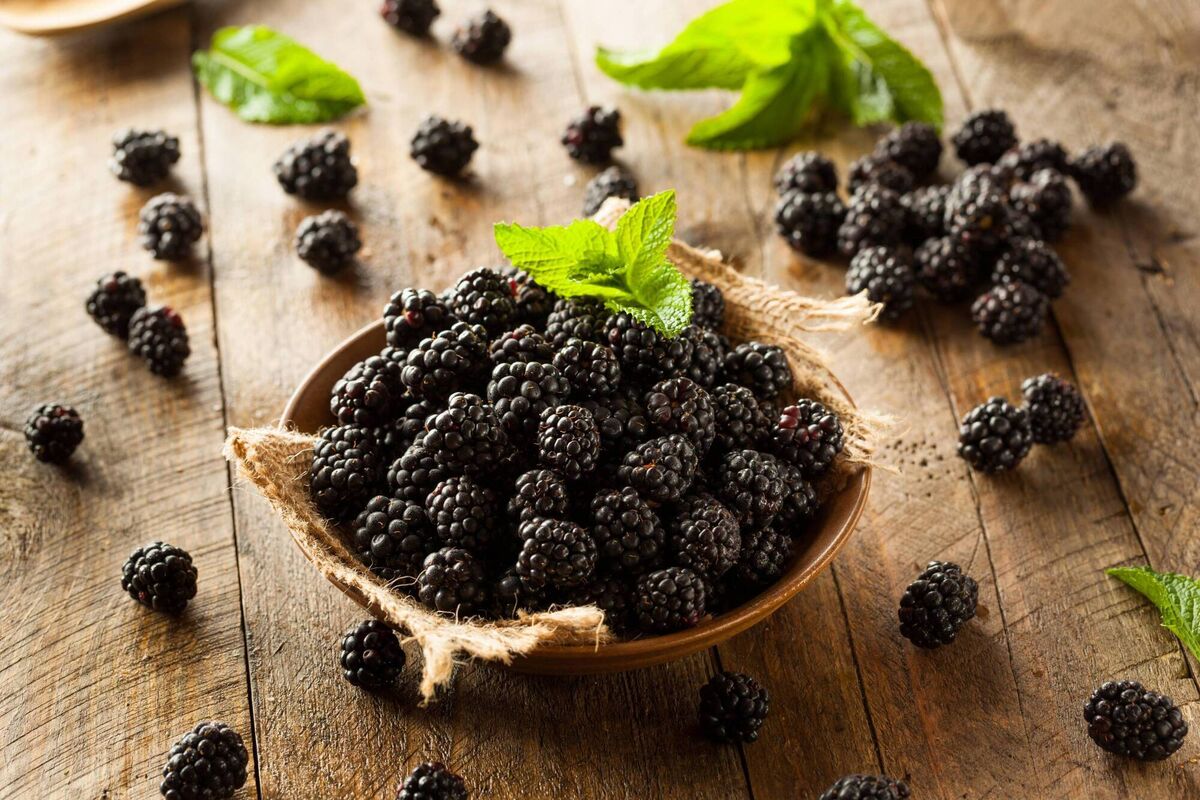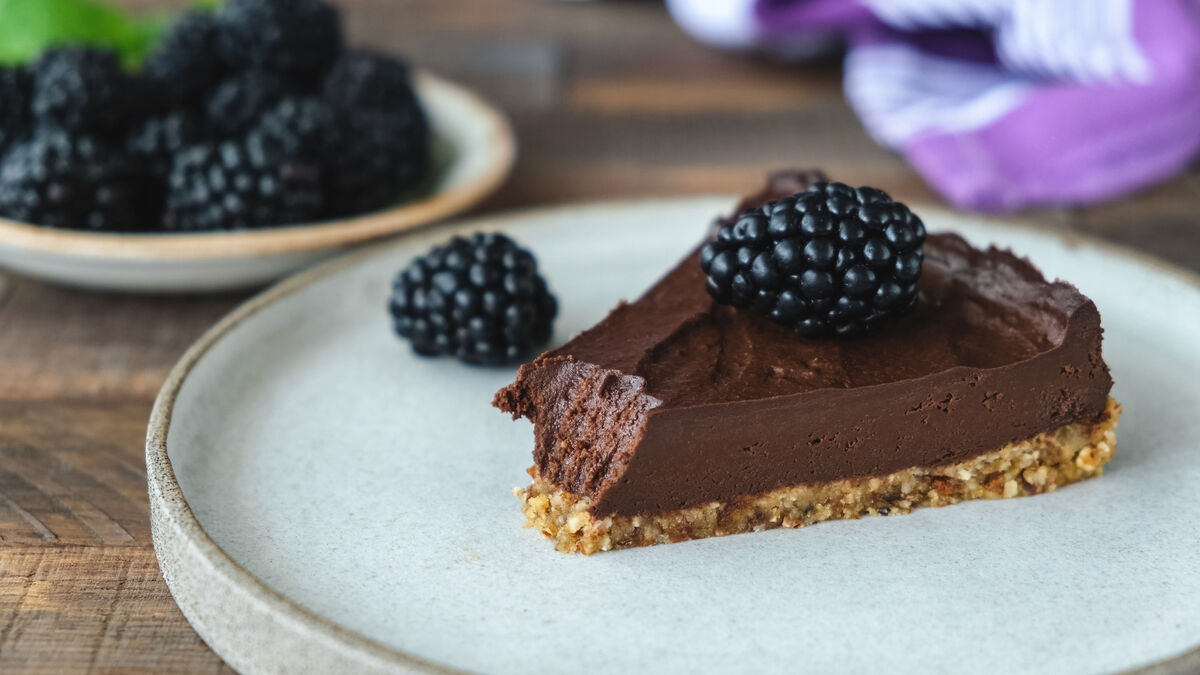Juanita Browne: Time to enjoy the blackberries

Sméara Dubha: Blackberry season is in full swing
Bramble causes mixed emotions.
Briars are cursed as they trip you up on a country walk. The thorns scratch your legs and tear at your clothes.
Bramble flowers bloom in spurts and starts, meaning the flower heads often look straggly, as some flowers look fresh and pretty, while at the very same time, other flowers look well past their prime. But then, in autumn, bramble comes into its own, producing beautiful juicy blackberries.
So maybe we can forgive its rambling, sneaky ways.

Nowadays, we often overlook such free food, but this wasn’t always the case. My Granny was a great forager. She lived next door to us and she often took us with her to pick blackberries along the roadside or around the edges of farm fields. She would eat them fresh and also make jams.
It wasn’t just blackberries, she also collected sloes, the fruit of blackthorn bushes/trees in hedgerows, and nettles for her very own homemade nettle wine.
Of course, if you do decide to pick some blackberries this autumn, try not to take them all! Leave some for other foragers and for our wild birds and mammals.

Since earliest times, the berries of the bramble have been seen as a valuable food source. Blackberry seeds have been found in the stomach of Neolithic man. In Ireland, they were often mashed up with oats as a type of porridge, but mainly used for making jams.
Long shoots were also used for wickerwork and to help secure thatched roofs. The fruits have also been used as dyes and for curing ailments such as skin and stomach problems. Blackberries were also used for treating diarrhoea in cattle and in people.
It was commonly understood that you shouldn’t eat blackberries after Halloween. According to Niall MacCoitir’s excellent book , the usual reason given for not eating blackberries after Halloweeen was that at Halloween the púca spat on the berries and made them inedible.
If a bramble becomes rooted to the ground at both ends, forming an arch, it could be used for many purposes. If you wanted to acquire good luck at cards or great musical ability, you could crawl under a bramble arch on Halloween night and ask the devil to grant you these special powers — in exchange for your soul of course.
In parts of England, bramble was sometimes planted on top of certain graves to deter less acceptable weeds, and grazing sheep, but there is also a train of thought that thorny briars growing on a grave acted to keep the dead underground and the devil out.
Bramble is often cleared nowadays to make way for agricultural land, or just neater plants, landscaping or new developments. But under the Old Irish Brehon Laws, bramble was protected and if you unlawfully cleared a field of bramble you could risk a fine of one heifer, such was its value for producing blackberries.
Of course, bramble is also an important plant for our wildlife, not just for its berries, but in producing pollen-rich flowers in late summer, which feed late pollinators, bees, butterflies and moths.
We have a patch of bramble in our garden which we have allowed to spread and thicken over the years, but we trim it back now and again so that it stays in its own ‘lane’, but there is always an amazing hum around it from bees each summer and it’s laden down with fruit in autumn.
And the best part about making room for bramble in your garden is that no matter what your skill level, it won’t matter. So even if you’re a bad gardener like me, if you have some bramble in your garden or in a corner of your housing estate, or local park or sports grounds, take a closer look this autumn and why not forage for some blackberries.
I’m off to find a bramble arch this Halloween night — I’ve always wanted to be able to play the piano.
- Juanita Browne has written a number of wildlife books, including and .





